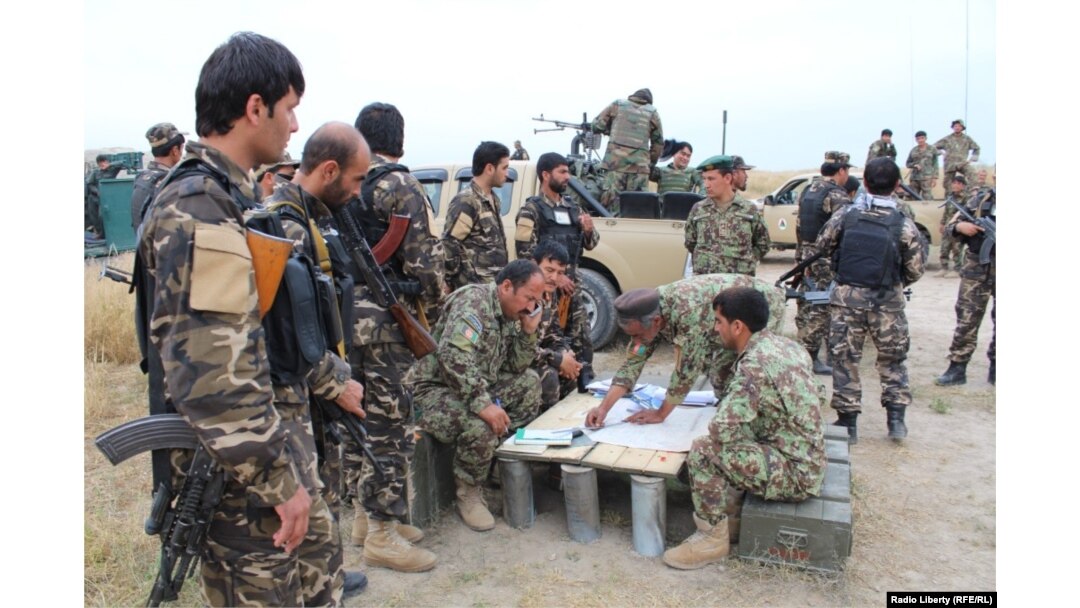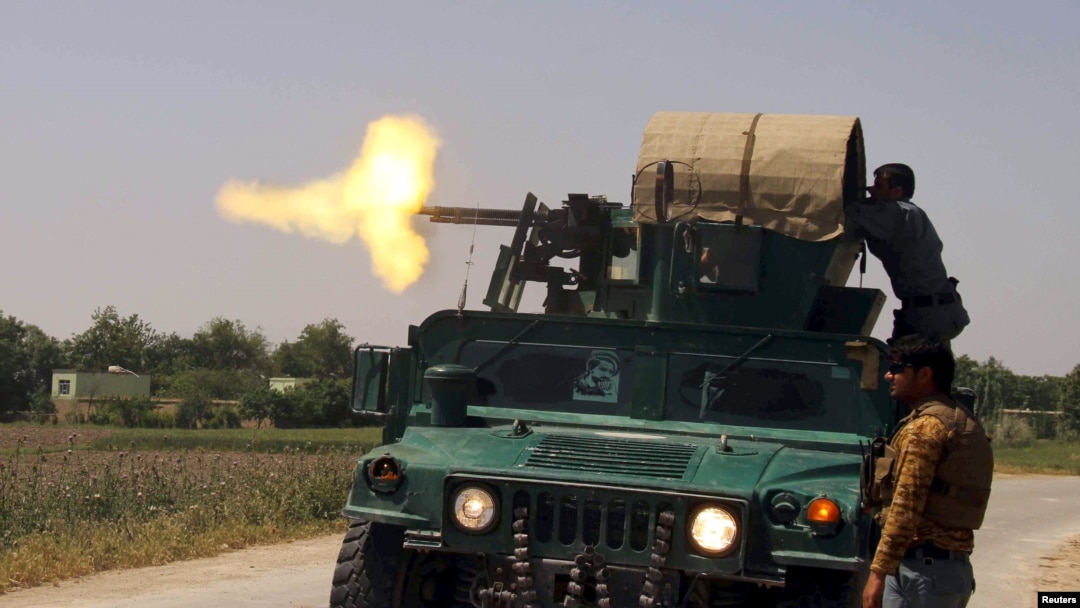KUNDUZ -- Residents of northeast Afghanistan are accustomed to seeing the launch of the Taliban's annual spring offensive, but there is something foreign to this year's edition.
"They don't speak to anyone. They wear black masks and sunglasses," says Shah Gul Khan. "Nobody knows where they're from."
Khan is describing the scene in Kunduz Province, where locals say several districts have fallen to militants.
"They walk freely," Khan says. "We want the government to confront them and secure our villages. Most of the districts are insecure. They're all fighting the government."
Afghan officials have said scores of foreign militants have been killed in recent fighting in Kunduz and Badkhshan, a northeast province with a lengthy border with Pakistan.
Many foreign militants are believed to have fled a monthslong Pakistani military offensive in Pakistan's restive northwest and have sought sanctuary in Afghanistan amid a drawdown of NATO forces.
In the north, some of the foreign fighters have joined the Taliban and other militant groups. They include the Islamic Movement of Uzbekistan (IMU), some of whose fighters have claimed allegiance to the Islamic State militant group, as well as the Khorasan Group, an organization claiming to be the Islamic State group's Afghanistan affiliate.
Other fighters, meanwhile, have bandied together in small groups and others have teamed up with armed gangs and drug rings that run rampant in the region.

The government has sent thousands of reinforcements to help the Afghan army, police, and government militias in Kunduz.
"In our areas, there are a lot of Taliban and foreign fighters," says Zahir Khan, another resident of Kunduz, where more than 15,000 people have been displaced because of fighting. "A lot of Uzbek and Tajik nationals have gathered here. We are suffering a lot at the hands of these foreigners."
Khan says the foreign fighters are a mix of Chechens, Pakistanis, Uyghurs, Arabs, and Uzbek and Tajik nationals, although he does not clarify how he makes the distinction.
Khudai Qul doesn't know where they are from, exactly, but he knows a foreigner when he hears one.
"We can't understand their languages, so we don't know where they're from," says the resident of Kunduz's Gor Tapa district, where militants are fighting government forces. He and his family have fled to the provincial capital, also named Kunduz.
"They were harassing us and beating us," Qul says. "They were ordering us to give them information about government soldiers."
IS-Style Tactics
The presence of foreign fighters has coincided with rising reports of barbaric tactics that mirror those used by Islamic State militants in Syria and Iraq. When hundreds of Taliban militants overran Afghan Army posts in Badakhshan last month, they killed 18 soldiers. Eight of the soldiers were beheaded, a first by the Taliban in the area.
Meanwhile, the IMU released a video last month that purports to show the militants beheading a former Afghan soldier, who the group claimed was among a group of 31 Hazaras who were kidnapped by unknown gunmen in the country's south in March.
Local officials blamed the mass kidnapping on the Islamic State group.
Afghan Forces Stretched
The government has sent thousands of reinforcements to help the Afghan Army, police, and government militias in Kunduz. But the militants have taken parts of several districts and have closed in on the strategic Kunduz airport.
Stephen Smithman, a spokesman for NATO Resolute Support Mission in Afghanistan, told RFE/RL's Radio Free Afghanistan on May 4 that Afghan forces were capable of repelling the attacks in Kunduz.
"The Afghan security forces are supported by air, by their own air force, they are supported by howitzers, and also by helicopters [that] can give them closer support," said Smithman, who estimated that Afghan forces would drive out the militants from Kunduz in a "couple of weeks."
"So, therefore, I would say it doesn't matter how [well-] trained the bad guys are," Smithman said. "The [Afghan] security forces will succeed up there."


